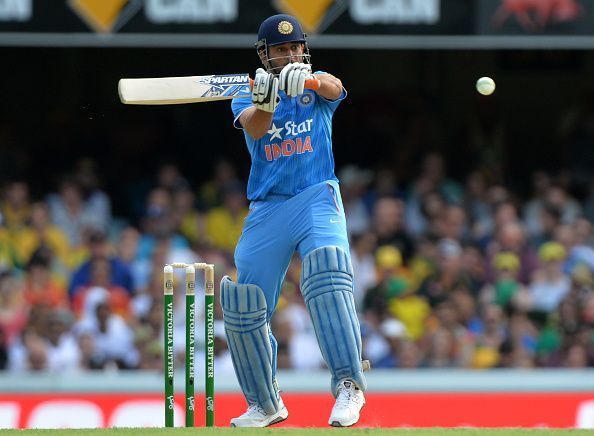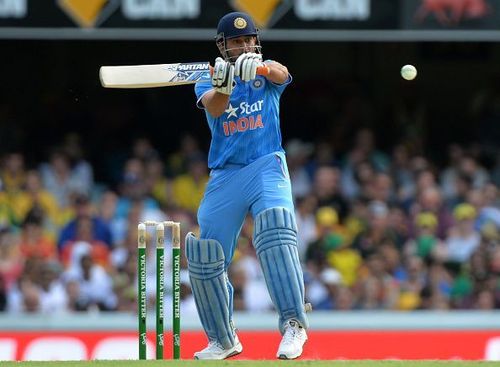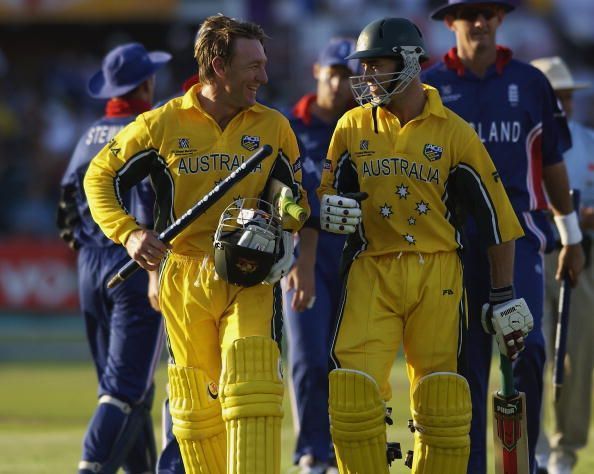
The secret of a successful run-chase: Bevan, Dhoni and the art of finishing

The intrigue involved in a successfully orchestrated run chase in a one-day game cannot quite be captured in words. It is momentous and makes for a compelling watch and is second to none in terms of seat-edge viewing. An air of nervous excitement permeates and an avid watcher senses drama.
Crowds come through the turnstiles praying for their money's worth and should the game go down to the proverbial wire, it remains etched in the viewers' minds for a long time to come.
The allure is all the more appealing given it cloaks the cool, calm and collected approach of the chasing side, mostly displayed by an able finisher and on most other occasions, it brings to the forefront a clever and intrepid pair with a cunning game plan and plenty of chutzpah.
The finisher, more often than not, knows when to maximise with minimum risks, and which bowler to target and bleed dry.
Finishing such run-chases leaves the opponent blanched and bombed even as the victorious finisher experiences a rare unexplainable high, where he may be excused to think that he could even walk on water, for a fleeting bit, till the enormity of the situation sinks in!
Cast your mind back to the chases crafted by the then greenhorns, Kaif and Yuvraj in Lord's in the summer of 2002, upsetting the English applecart.
Then, there is the savage butchery of Pakistan in early 2005 by Sehwag and Dhoni in India, not to forget the impressive "come from behind" win cobbled by Dhoni and Yuvraj in early 2006 in Pakistan, which took MSD to another level, after his clinical hitting versus the Lankans en route to 183* at Jaipur only the previous winter.
The World Cup win on 3/4/2011 in Mumbai was the crowning glory as MSD seized the initiative, promoted his self and swamped the Lankans in the company of Gambhir.
The names of Virat Kohli, MS Dhoni, Michael Bevan and Mike Hussey from the modern era are at the top of my head when I conjure up a heroic run chase and a smart finisher.
Kohli's blast that annihilated Malinga and co. in a truncated group match in the VB series in early 2012 helped him turn the corner and morph into a giant of such frenetic chases.
Then again, the Master's exhibition in the famous "Desert Storm" was, I suppose, the benchmark on which all other run-chases get compared to.
Sachin's blade in April 1998 was as broad and wide as a barn door; it had a wide middle and reeked of incandescent brilliance.
Coming against the might of the Aussies made it all the more sweet. India, till that point, may well have choked at the altar, snatching defeat from the jaws of victory, but for Sachin's masterclass.
That he could still produce such rare gems 10 years down the line in early 2008, spoke of his longevity - aside from shutting many a carping critic mouth that reckoned India's wheels came unstuck whilst chasing in bouncy alien conditions.
Batting at No.5 and 6 demanded a great deal of adaptability and malleability from the players, for one could either be walking in during a crisis, or have the onerous task of upping the ante, both difficult without a cool head. That aside, one had to shepherd the lower order, including the tail.
In my opinion, among the lot, Bevan was the pathfinding trailblazer. Given he was a left-hander and that my career overlapped his, I was keen to emulate him.

In those days, ODIs were played not with new balls like now, and it was very difficult in fading twilight to sight the ball.
The rules were tweaked later, and the white ball started getting swapped in the 34th over, resulting in batsmen having to contend with banana-like reverse swing.
It was a huge challenge. Bevan was an uncomplicated batsman with no frills or fancies, or the shining elegance attached to most left-handers. He went about his task assiduously, brick by brick, and scoring "ugly runs" in the face of adversity was his habit.
Always the ugly duckling in a side packed with heavyweights, he was the quintessential flyweight with feet of quicksilver and a heart for a fight.
He ran between the wickets as if with electric heels, and it was this priceless ability that made him get off strike often enough to irk the opponents. When the boundary ball surfaced, boy was he prepared to pounce! He was a busybody at the crease, and invested a lot of faith in the lower order and tail-enders.
It was his unflustered approach and self-belief that paved many a path for Australia, for he knew that if he could break down the big chase into tiny little targets, he would close out the game, more often not. The secret to his game plan was to be 'an eager beaver': nudge, push and rotate and take the bowlers unawares to optimise his presence.
The way he sunk the might of the English in a World Cup game in 2003, in the company of Andy Bichel was an object study of an improbable chase turned on its head by the pair's will to claw with their fingernails.
Banal and simplistic as it may sound, the key to a successfully orchestrated run-chase is to conceive a plan and go after it with an unshakeable self-belief.
Bevan's ability was to take the match to its very depths and make the bowling side panic and wilt under severe duress. One may almost carve up the insides of the defending side as they begin to ruminate the 'might have beens' and freeze with cold feet.
It is here that an MS Dhoni excels, as he bullies the opponent into utter submission by targetting their weakest link.
His assault at the start of a given over in the death maximises returns. His ploy is no different from Bevan's, just that he is a mightier and a meatier hitter than the former.
If Bevan could push, drop, tip and run, as if hitting the ball would hurt the leather, Dhoni blistered and pulverised the orb with his muscular forearms. Dhoni also ran well with his tree trunk like legs, whereas Bevan was nimble and supple between the stumps.
The common thread that connected them was the fact that both absorbed pressure and stayed in the moment without sweating on the situation at hand or twisting themselves into knots in anxiety.
Both were clever judges of the angle the ball traversed, and it is their investment in the little drops that made the opponent feel queasy and uneasy in their boots, leading to them eventually throwing in the towel. It is a case of slow death as both Dhoni and Bevan eat away at the vitals of the bowlers with a precise plan. It is in the execution that they leave many pretenders high and dry, for lesser mortals freeze at the altar of victory, almost consumed by their over-eagerness.
At the threshold of the finishing line, both display sangfroid and a cool head.
Dhoni's recent form has been impeccable and has shut the naysayers after his impressive form lately.
On an occasion or two - as witnessed in the Windies this July, he may have been guilty of stopping too long in his pursuit to conquer, but his remarkable belief, coupled with his ability to shepherd Bhuvneshwar Kumar in a nerve-wracking encounter versus the Sri Lankans, showed the world that a lot of fight is still left in the old dog.
Another nuggety dig that is clear in my mind's eye was the tactical assault on a tall Clint McKay in 2012 in Adelaide, of all the Aussie grounds, where he heaved a huge straight six to tilt the scales in India's favour right at the doors of victory.
Without contrasting and comparing a T20 chase to a 50-over affair, the latter assumes greater significance for the sheer merit of the sustenance factor in a longer version.
T20 is rife and replete with such graphic instances.
In this day and age, the innate fabric of this format is to hunt down or go down, if at all in flames, but to fashion a brainy fight from behind in a 50-over chase takes the proverbial confectionary stall, let alone the cake and the biscuit!